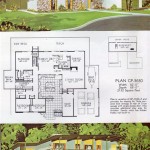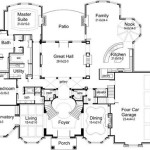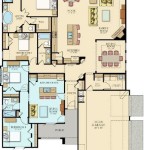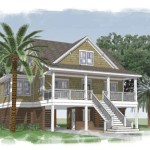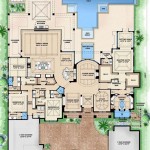Federal Style House Plans: A Comprehensive Guide
Federal style architecture, prevalent in the United States from roughly 1780 to 1830, embodies a refined elegance and symmetrical grandeur. This period coincided with the newly formed nation's burgeoning sense of identity and its desire to project an image of strength and sophistication. Choosing a Federal style house plan offers homeowners a timeless design steeped in history and architectural significance.
Identifying a true Federal style house plan requires an understanding of its key characteristics. Symmetry reigns supreme in these designs, often featuring a central entrance flanked by evenly spaced windows. Multi-paned windows, arranged in symmetrical patterns, are a defining feature. Roofs are typically hipped or gabled, with low pitches and minimal overhang. Dormers, if present, are also symmetrically placed and often adorned with classical details.
The exterior of Federal style homes showcases a restrained elegance. Materials often include brick, wood, or stucco, with carefully crafted details. Decorative elements such as dentil molding, pilasters, and cornices contribute to the sophisticated aesthetic. Classical influences, derived from ancient Greek and Roman architecture, are evident in these embellishments. Palladian windows, featuring a large central arched window flanked by smaller rectangular windows, are a hallmark of the style.
Interior layouts of Federal style house plans reflect the formal lifestyle of the era. A central hallway often bisects the home, creating a sense of order and providing access to various rooms. Formal living and dining rooms are typically located on the main floor, often featuring fireplaces as focal points. High ceilings and large windows create airy and well-lit spaces.
Floor plans frequently incorporate a grand staircase, often positioned prominently in the central hall. This architectural element serves both a functional and aesthetic purpose, showcasing the craftsmanship and elegance of the design. Bedrooms are typically located on the upper floors, providing privacy and separation from the public spaces on the main level.
Adapting Federal style house plans for modern living requires thoughtful consideration. While preserving the historical integrity of the design is paramount, incorporating modern amenities and functionalities is crucial. Open floor plans, while not traditionally characteristic of the style, can be achieved by strategically removing or altering interior walls. This can create a more contemporary flow between living spaces while still maintaining the overall Federal aesthetic.
Modern kitchen designs can be integrated seamlessly into a Federal style home by incorporating period-appropriate cabinetry and hardware. Appliances can be chosen to complement the overall aesthetic, blending seamlessly with the historical character of the space. Similarly, bathrooms can be updated with modern fixtures and finishes while retaining a classic feel through the use of traditional materials and design elements.
Choosing the right materials for a Federal style home is crucial for maintaining its authenticity. Historically accurate materials such as brick, wood siding, and slate roofing are ideal. Windows should be multi-paned and feature traditional detailing. Interior finishes should also reflect the period, with wood flooring, crown molding, and chair rails being common features.
Working with an architect specializing in historical preservation can be invaluable when adapting Federal style house plans. They can provide expert guidance on preserving the historical integrity of the design while incorporating modern needs and preferences. Careful attention to detail is essential for ensuring that any modifications complement the original architecture and enhance its timeless appeal.
Landscaping plays a significant role in enhancing the overall aesthetic of a Federal style home. Formal gardens, featuring symmetrical layouts and geometric patterns, complement the architectural style. The use of hedges, boxwoods, and other traditional plantings can create a sense of elegance and sophistication. A carefully designed landscape can seamlessly integrate the home into its surroundings, creating a harmonious and visually appealing environment.
Building a Federal style home requires a commitment to craftsmanship and attention to detail. Finding skilled contractors experienced in working with historical architectural styles is essential for ensuring the quality and authenticity of the construction. Careful selection of materials and adherence to traditional building techniques will contribute to the longevity and enduring beauty of the home.
Federal style house plans offer a unique opportunity to live in a home steeped in history and architectural significance. By carefully considering the key characteristics of the style and working with experienced professionals, homeowners can create a home that seamlessly blends historical charm with modern living. The timeless elegance and enduring appeal of Federal architecture make it a compelling choice for those seeking a home of distinction and character.

Farmhouse Style House A Timeless And Classic Home Redfin
:max_bytes(150000):strip_icc()/1375tideland_4c_ext-364758e42ee5467a8500d2be5ec8ba25.jpg?strip=all)
Top 14 Best Ing House Plans

House Plans Find Your Perfect Plan

25 Popular Types Of Houses And Home Styles House Architecture Exterior

1940s House Plans These Vintage Starter Home Designs Were Small But Beautiful Americana

74 Beautiful Vintage Home Designs Floor Plans From The 1920s Americana

Contemporary House Design Kerala Model Home Plans

The Best 2 Story Barndominium Floor Plans

Floor Plans Custom Built Homes With 2 Car Garages Wayne

450 Years Of Houses In The United States Archdaily
Related Posts


